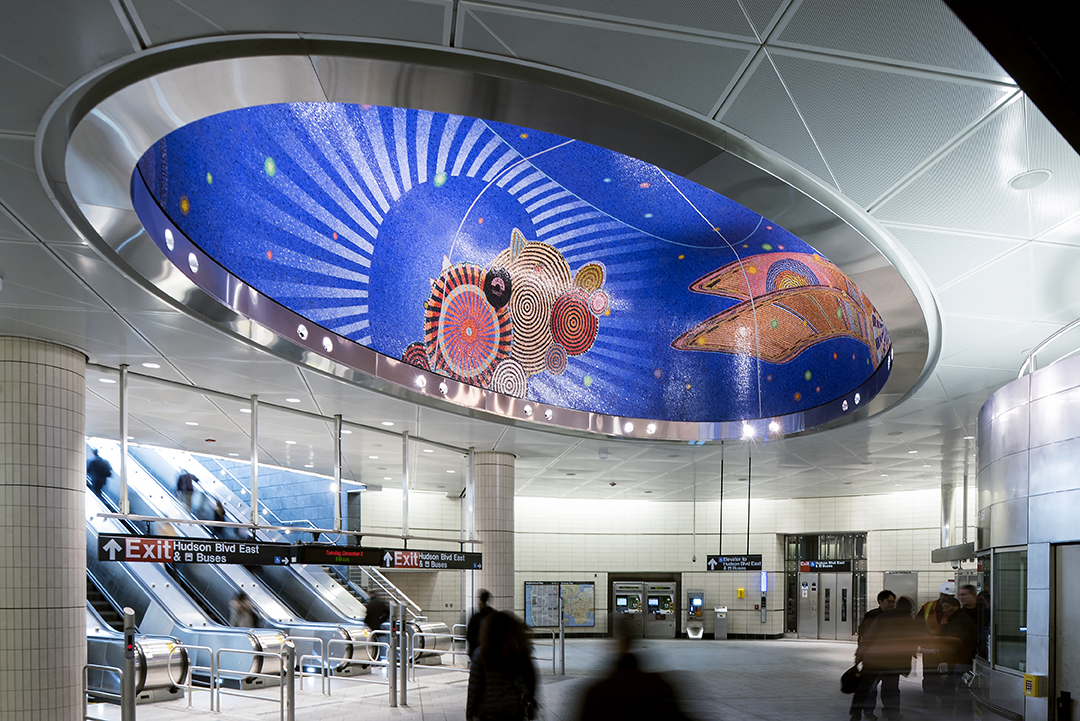Scroll down to view the map and learn more below.
In subway, train, and bus stations, artwork by Pratt Institute alumni and faculty enlivens daily commutes. From colorful glass windows on elevated tracks in the Bronx to intricate mosaics underground in Brooklyn, they offer moments of beauty and contemplation that reflect the culture of the city and its many communities.
Below is a map of transit art so you can take a ride through the diversity of creative expression from the Pratt community, much of it created through the ongoing MTA Arts & Design program for the subway and commuter rail stations. Keep an eye out the train window or pay attention to the details of the stations to turn your next commute into an art crawl. Know of one we missed? Drop a line to editorial@pratt.edu.
Manhattan
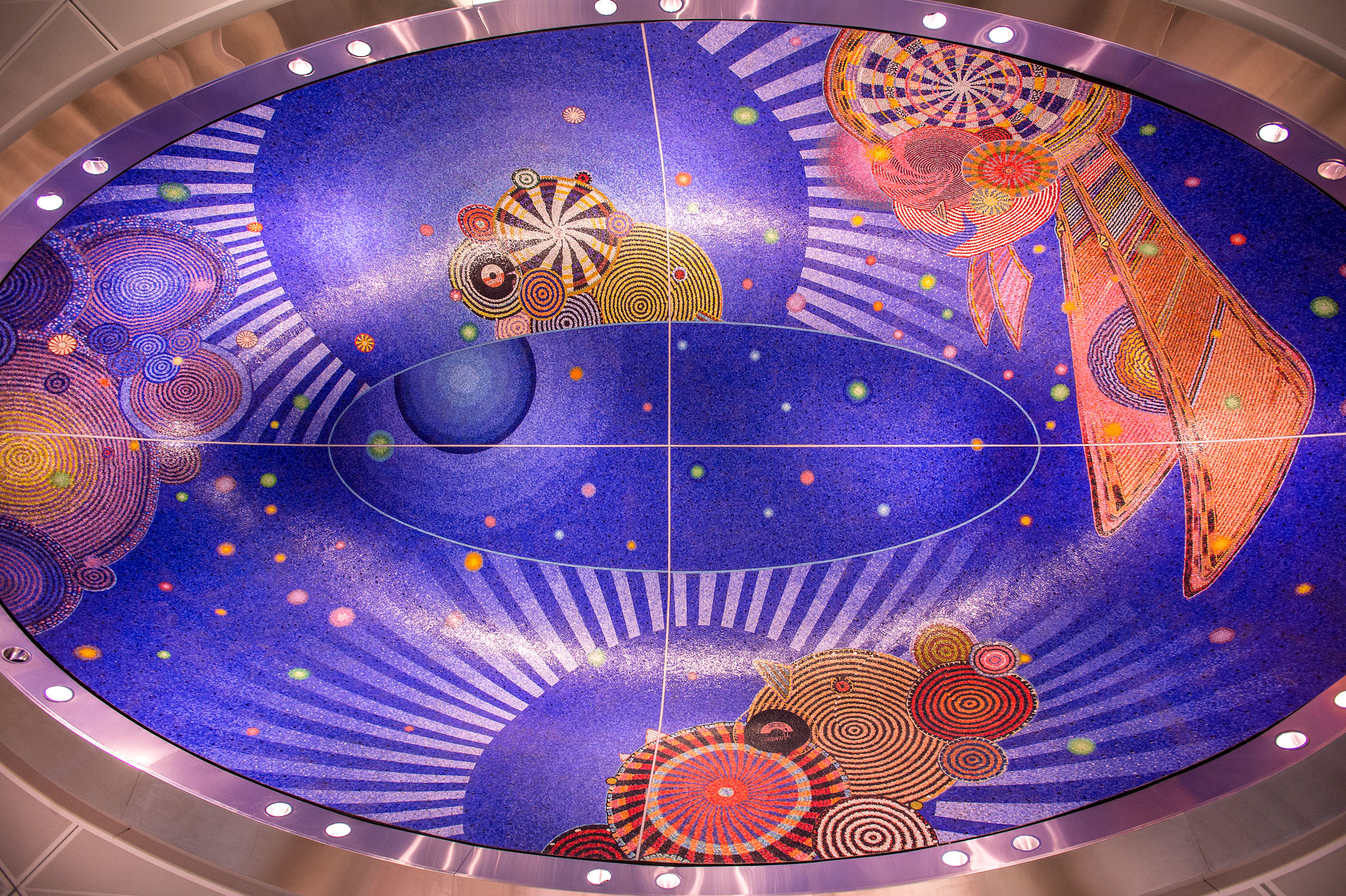
Look up when descending into the 34th Street-Hudson Yards (7) station to see the monumental mosaics by Xenobia Bailey, BFA Industrial Design ’77. “Funktional Vibrations” (2015) features kaleidoscopic colors and overlapping cosmic shapes for one of the largest works in the MTA transit network.
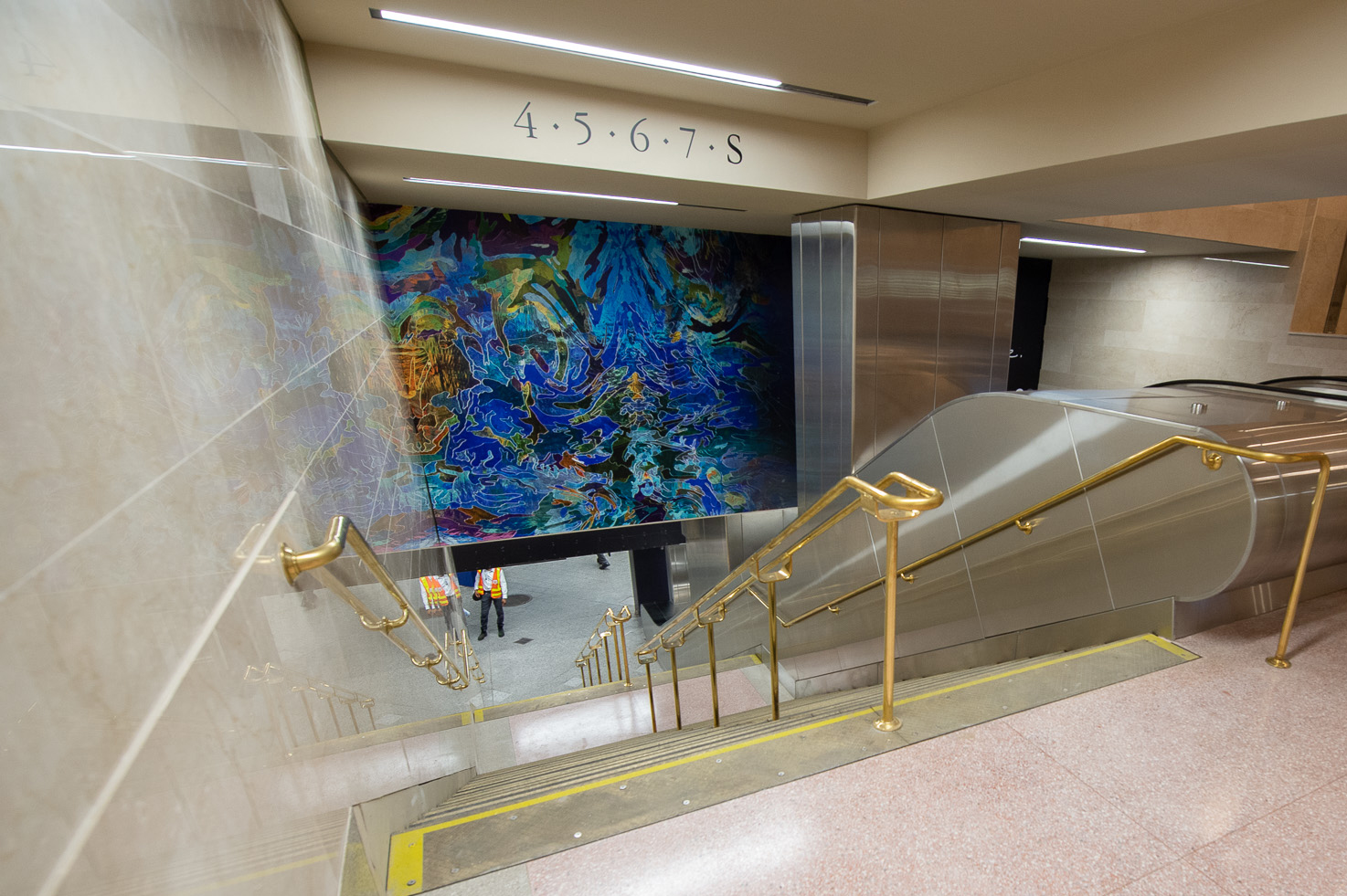
While taking the stairs or escalator into the subway station from Grand Central Terminal, travelers pass below a mirrored-glass artwork by Jim Hodges, MFA Fine Arts ’86. “I dreamed a world and called it Love” (2021) has 5,000 pieces of glass in over 70 colors to create a progression that transforms the further viewers go underground.
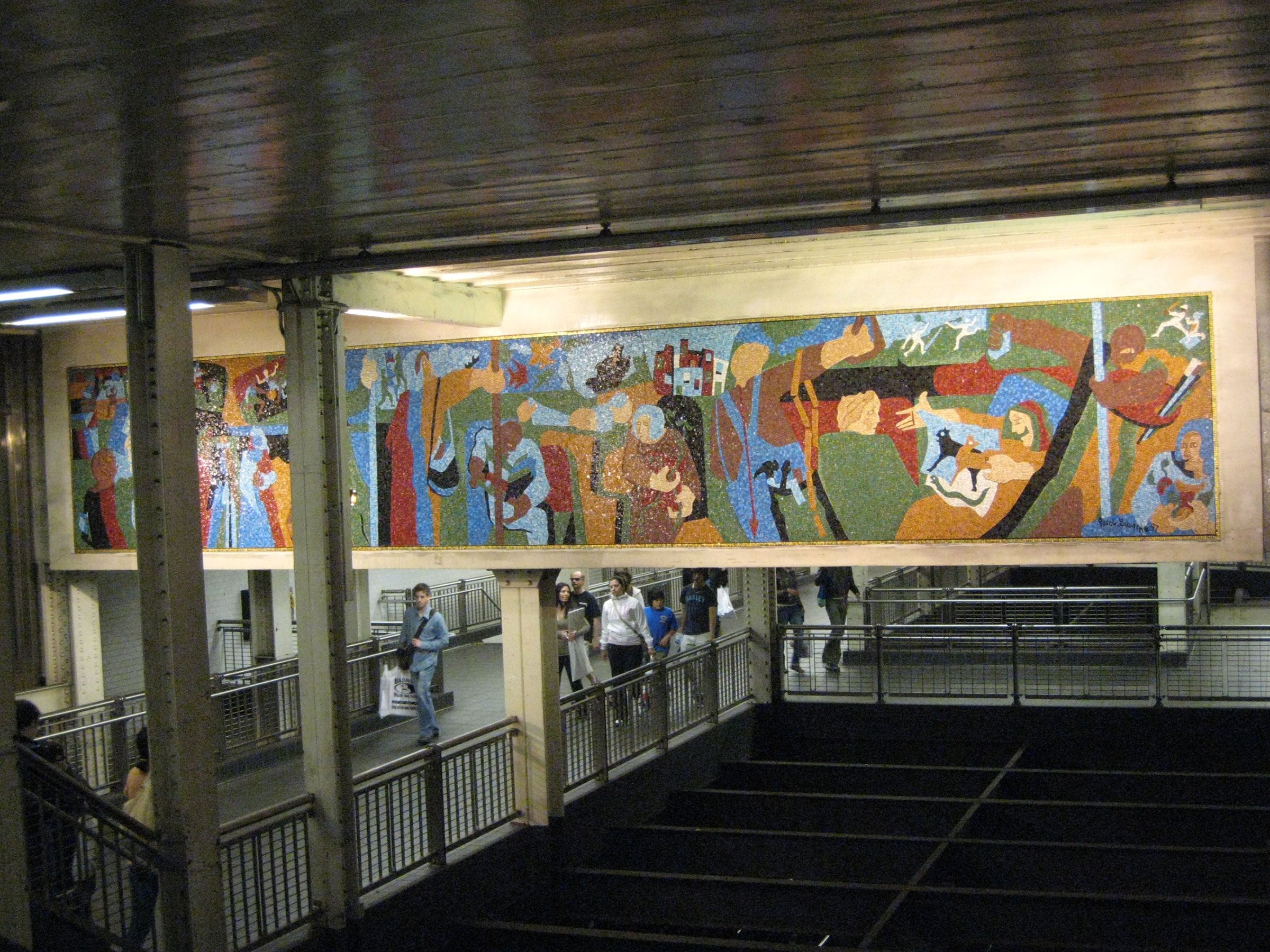
The final public work by famed artist and former Pratt faculty member Jacob Lawrence is in the mezzanine of the sprawling Times Square subway station. The “New York in Transit” (2001) mosaic mural honors the many people from across cultures and communities who use public transit, offering a vivid panorama of life as if seen from an elevated train.
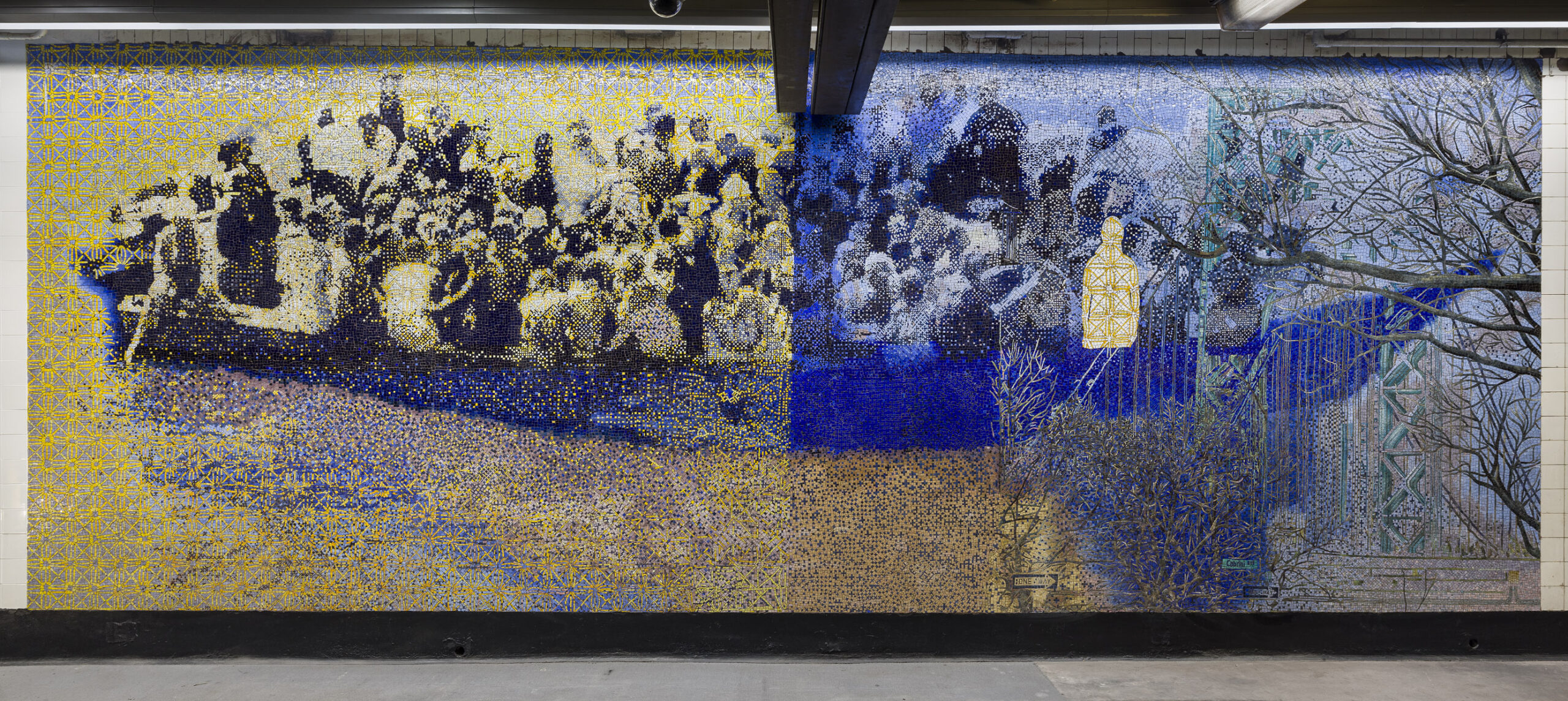
The immigrant experience of generations of newcomers to New York City and the Washington Heights neighborhood comes to life in “Great Waves of Immigration” (2023), by Carmen Lizardo, BFA Photography ’97; MFA Digital Arts ’00, at the 181 Street Station (A). Three mosaic murals feature layered images inspired by the neighborhood, such as the George Washington Bridge, and portraits of people who settled in the area, along with scenes from the trip to the United States, including an overfilled yola (Dominican boat).
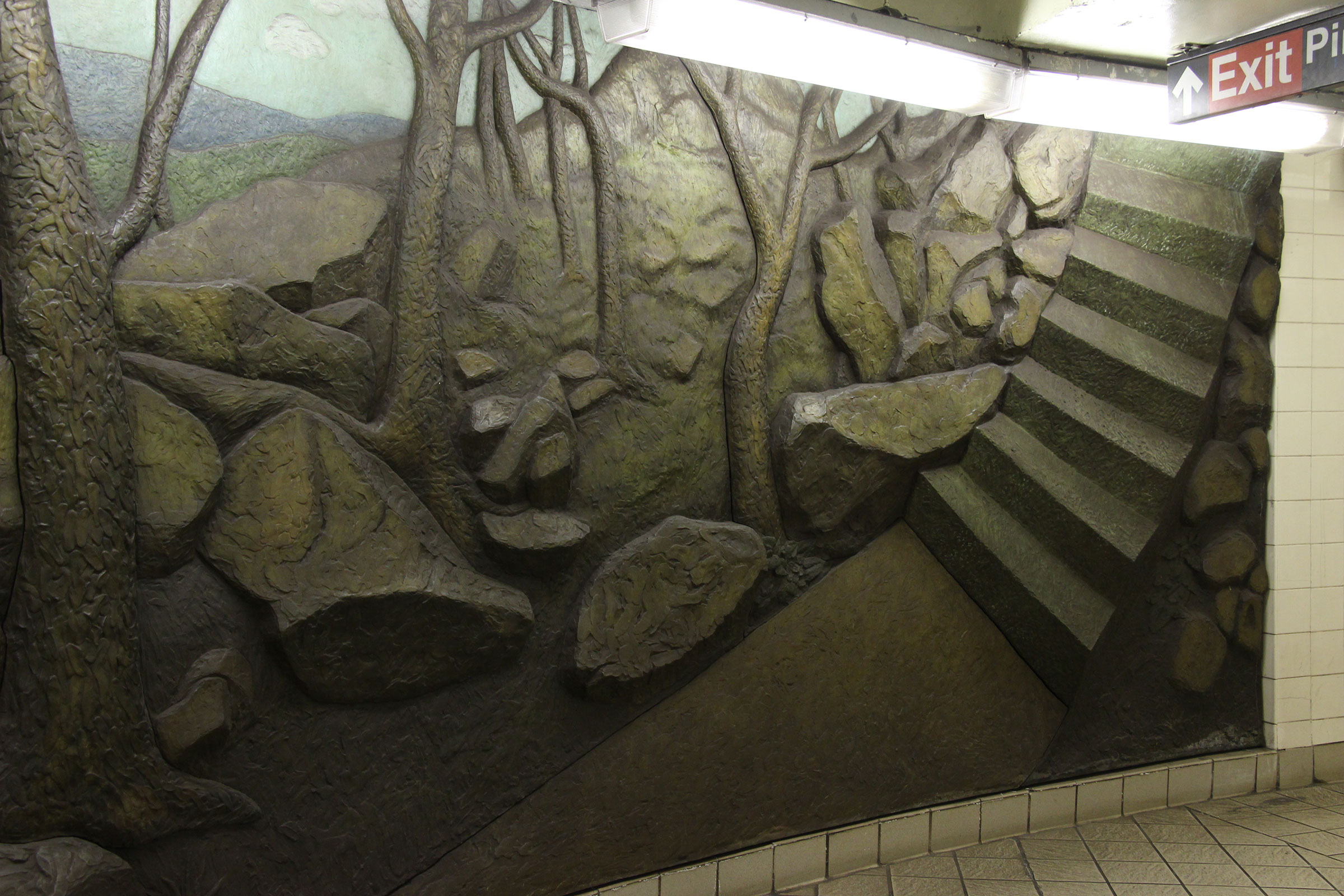
“Subway Wall” (1990) by Harry Roseman, BFA Graphic Art ’68, recalls the geological history of Manhattan before the area around the Wall Street station was developed into a land of skyscrapers. The bronze wall relief features a rocky surface and trees, as well as a path alluding to the built environment.
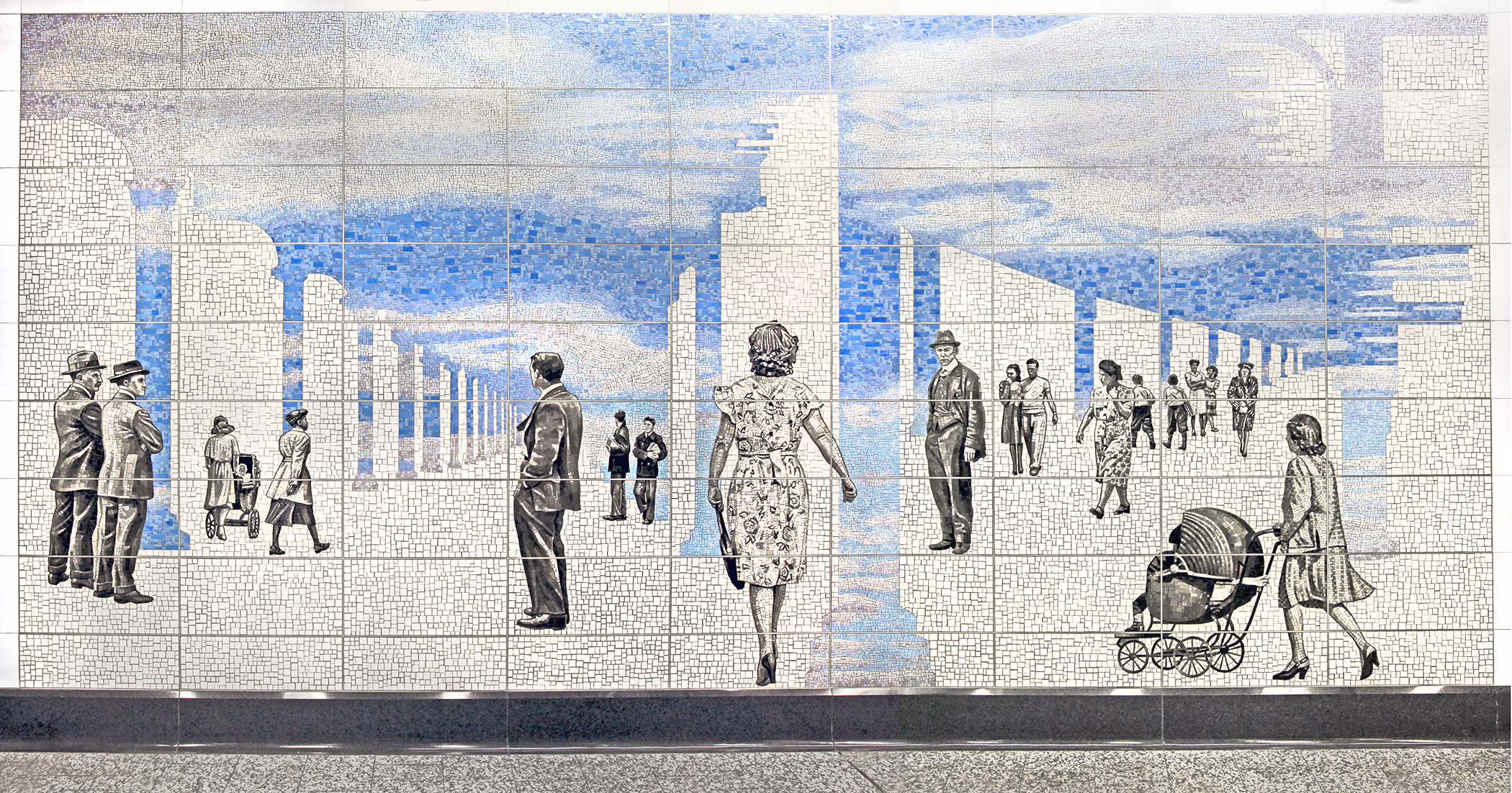
For a station on the long-awaited 2nd Avenue subway line, Adjunct Professor CCE of Fine Arts Jean Shin, BFA ’94; MS ’96, used imagery from early 20th-century photographs of the dismantled elevated lines. Including laminated glass, glass mosaics, and ceramic tile, “Elevated” (2017) at the Lexington Avenue/63rd Street (F/Q) station transports travelers into the past while they experience the subway’s future.
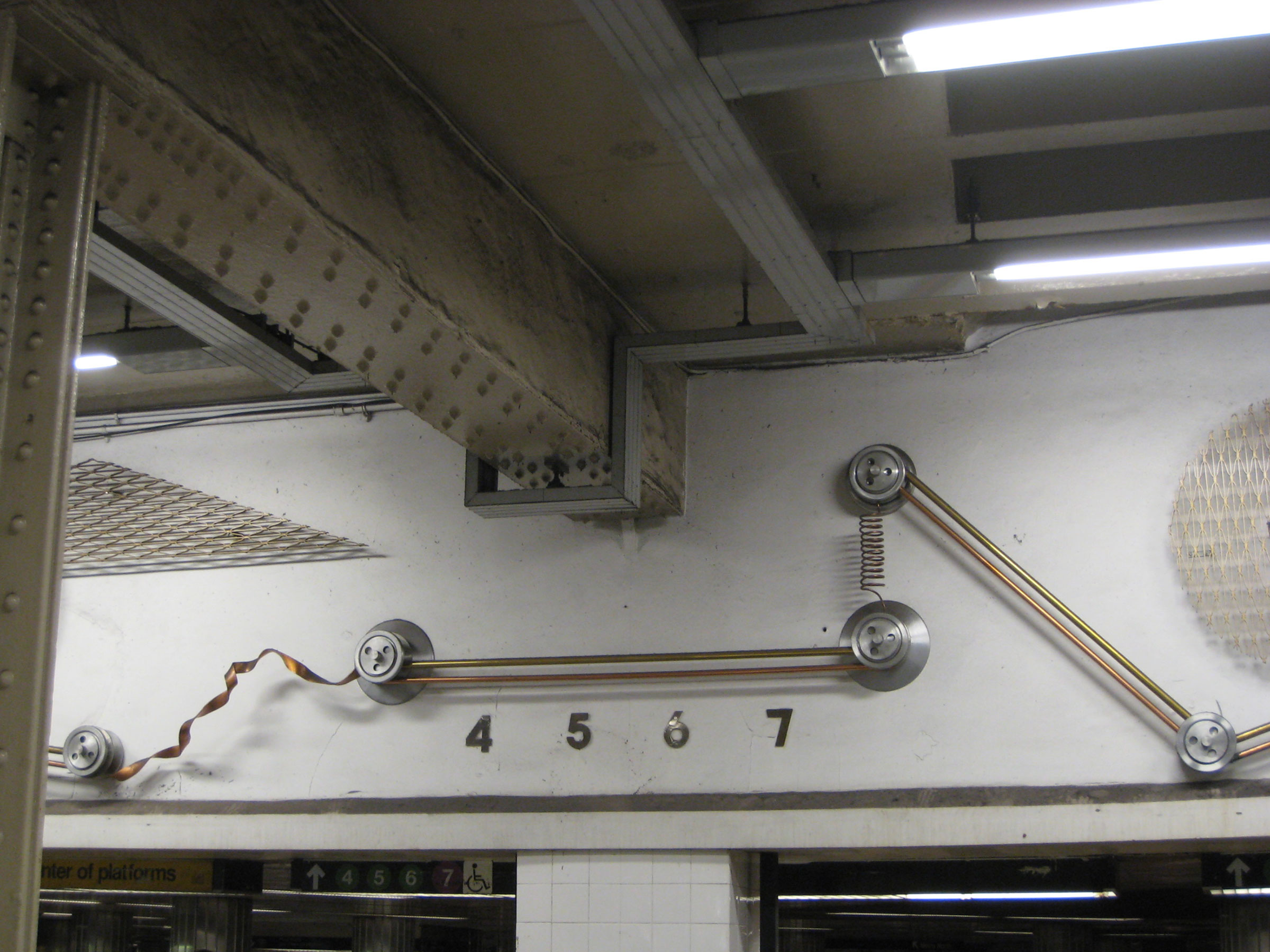
Steel wheels, copper springs, and sculptural waves of aluminum sheets are some of the metallic components of “Fast Track and Speedwheels” (1990) by Daniel Sinclair, MFA ’72. The assemblage that overlooks a passageway between the Grand Central subway station and the main terminal uses an Art Deco style to express the daily motion of transit.
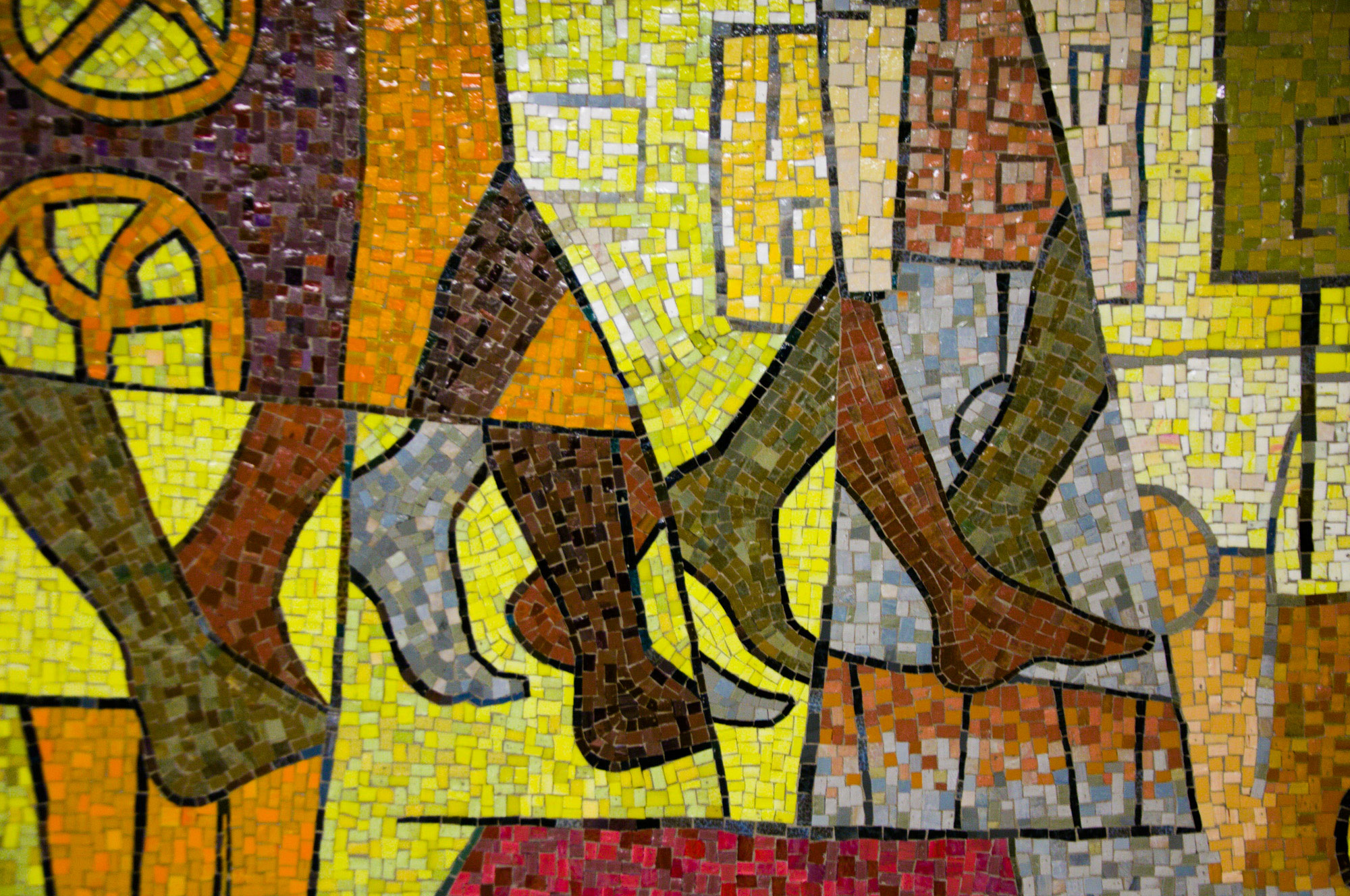
“Migration” (1999/2018) by Christopher Wynter, professor in Foundation, evokes movement in the Cathedral Parkway-110th Street (B/C) station. The mosaic includes footprints, wheels, the North Star, and circular patterns, all centered on the idea of searching for home.
Brooklyn
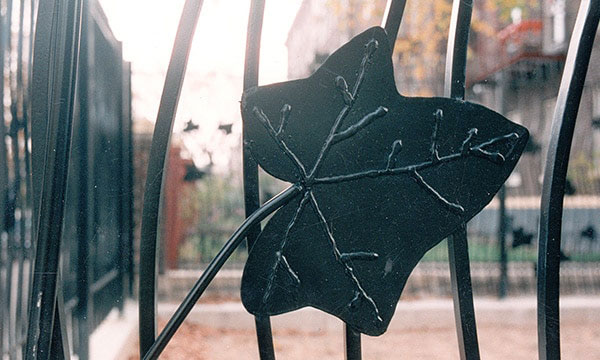
In “IL7/Square” (1999) by Millie Burns, AOS Digital Design and Interactive Media ’03, metal foliage details the fences and railings of the Botanic Garden (S) station. The wavy constructions reference the trees of Eastern Parkway and flourishing plants of the nearby Botanic Garden.
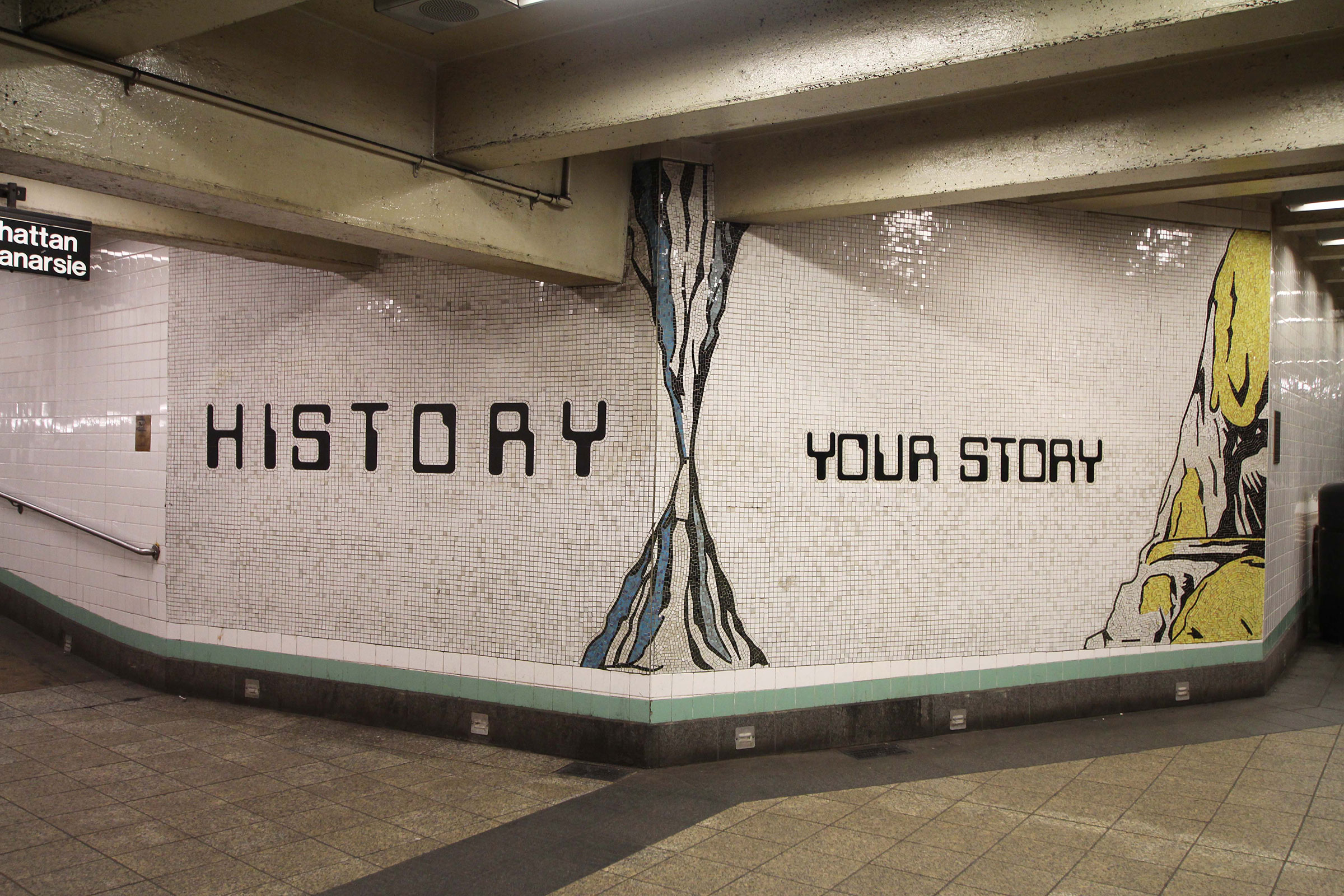
Text and images intersect enigmatically in “Signs of Life” (2001) by Jackie Chang, visiting instructor of social science and cultural studies, in the Metropolitan Avenue (G) station. Juxtaposed words like “FAITH” and “FATE” with images of blades of grass and crashing waves encourage travelers to think of something new each time they view the glass and ceramic tile work.
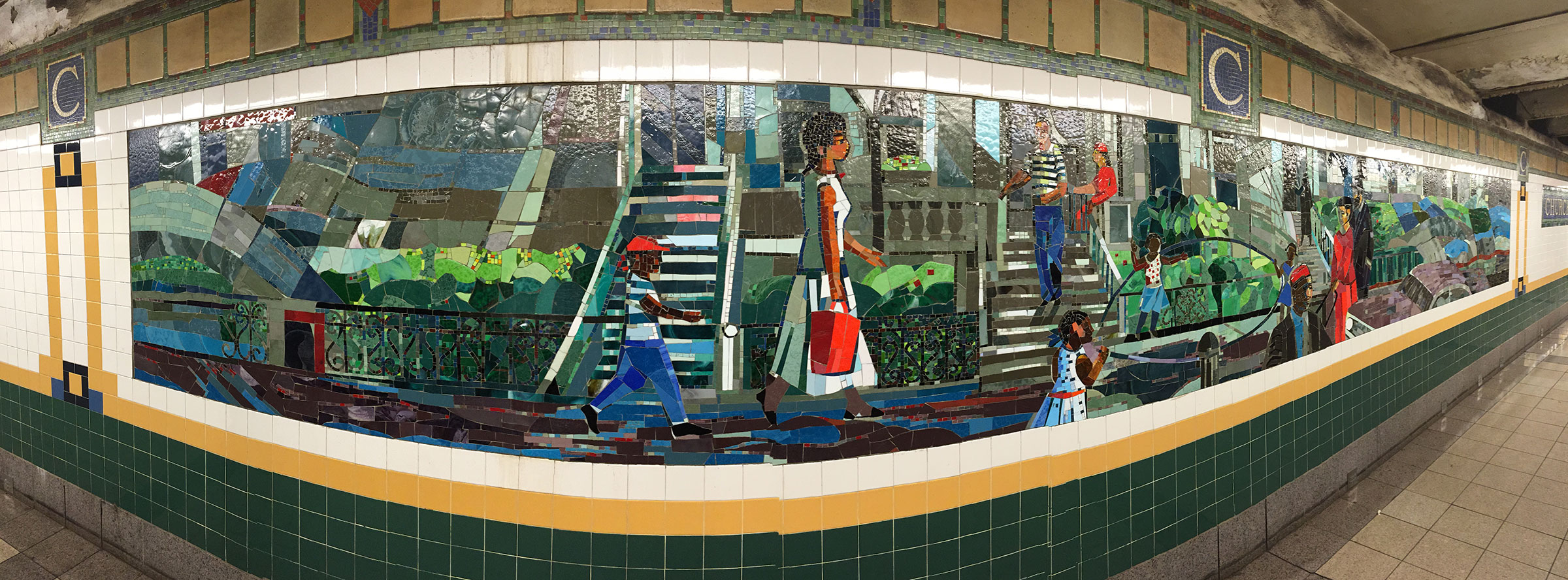
“Transitions” (2001) by Louis Delsarte, BFA Graphic Design ’67, in the Church Avenue (2/5) station reflects the culture of the Caribbean residents of Flatbush in a series of glass mosaics. They include vibrant scenes of the West Indian Day Parade Carnival as well as the quieter moments of a Sunday morning.
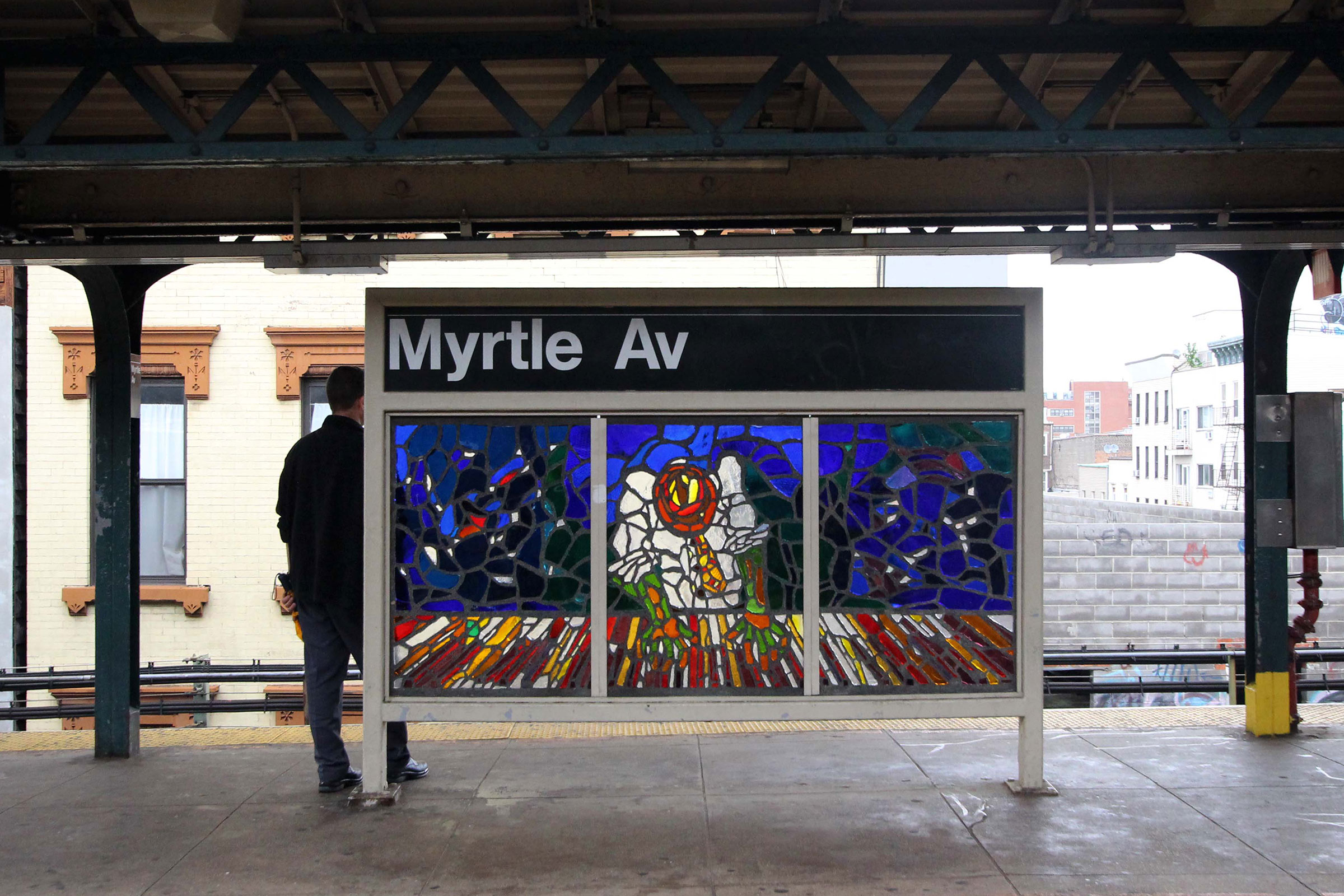
Windows and windscreens energize the Myrtle Avenue (J/M/Z) station with lively depictions of jazz musicians in “Jammin’ Under the EL” (1999) by Verna Hart, MFA ’91. As Hart stated, the piece is “a kind of jam session of the mind.”
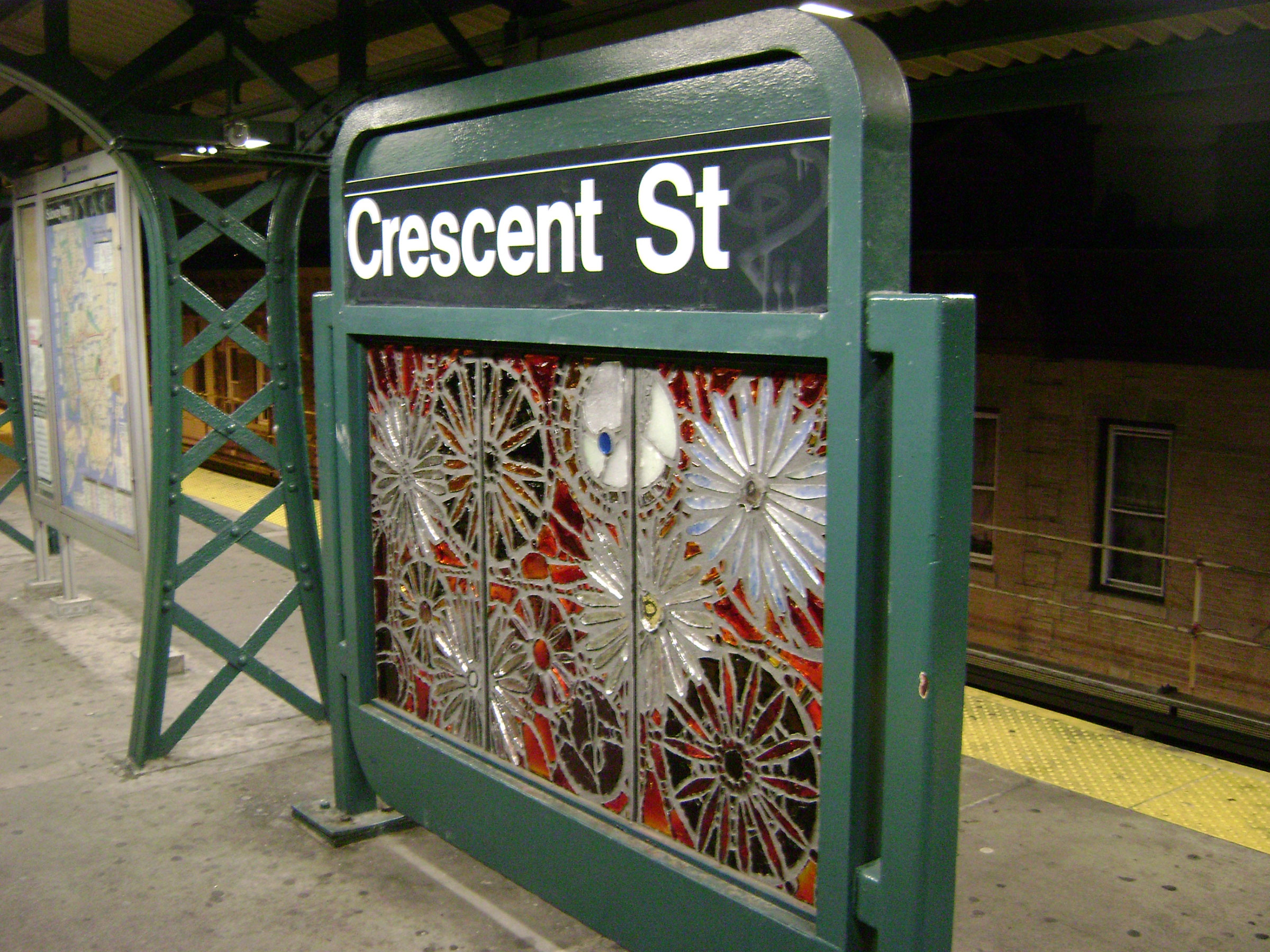
Daru Jung Hyang Kim, MFA ’80, was inspired by the view to the sky from the elevated platform at the Crescent Street (J/Z) station. “Wheel of Bloom-Soak up the Sun” (2007) includes circular patterns of color chronicling the cycle of a day, from morning represented by yellow to blue for night.
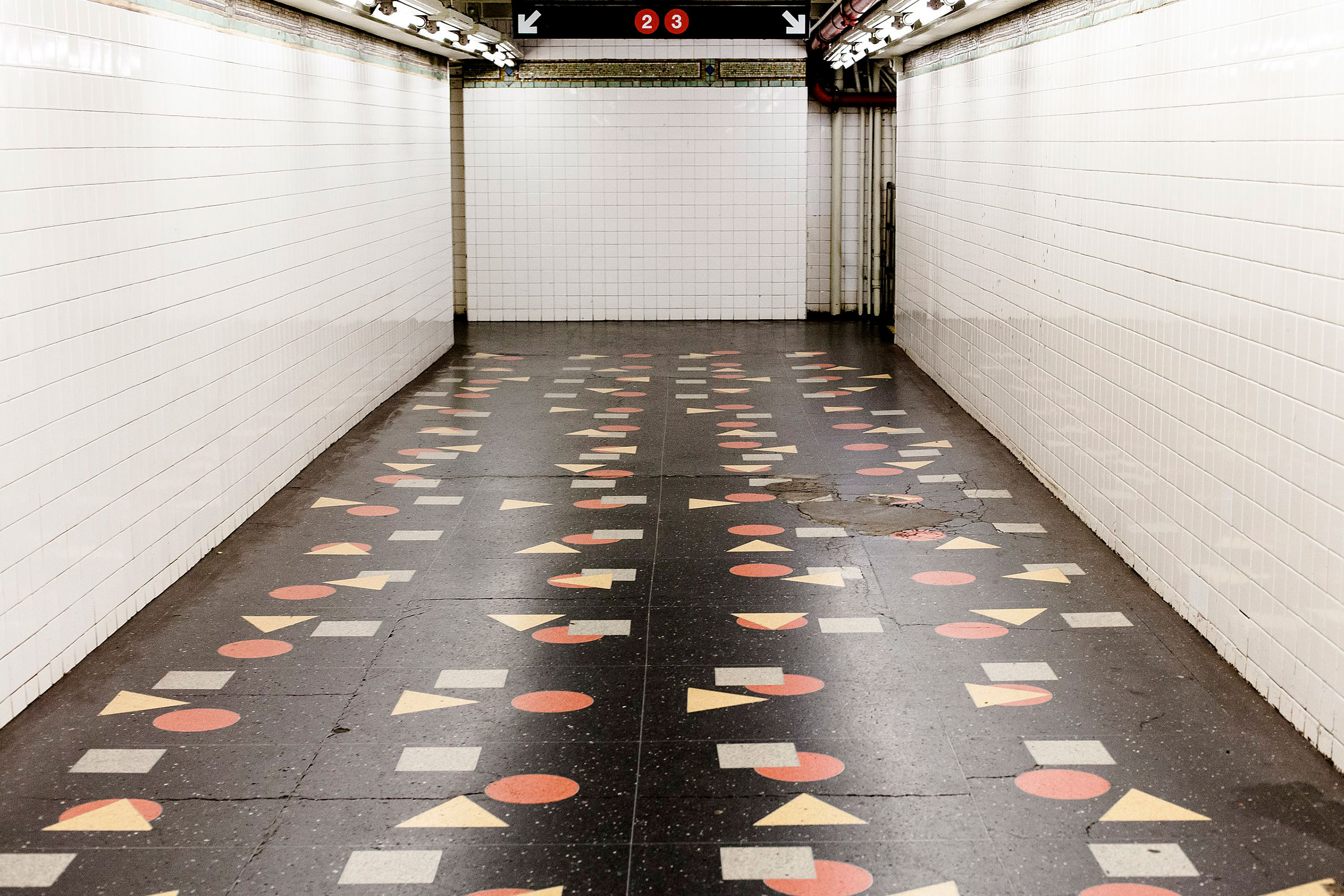
“Clark Street Passage” (1987) by Ray Ring, BFA ’67, turns a corridor of the Clark Street (2/3) station into a dynamic work of art with a rhythmic pattern of overlapping circles, squares, and triangles. The work was influenced by Ring’s explorations of geometric abstraction.
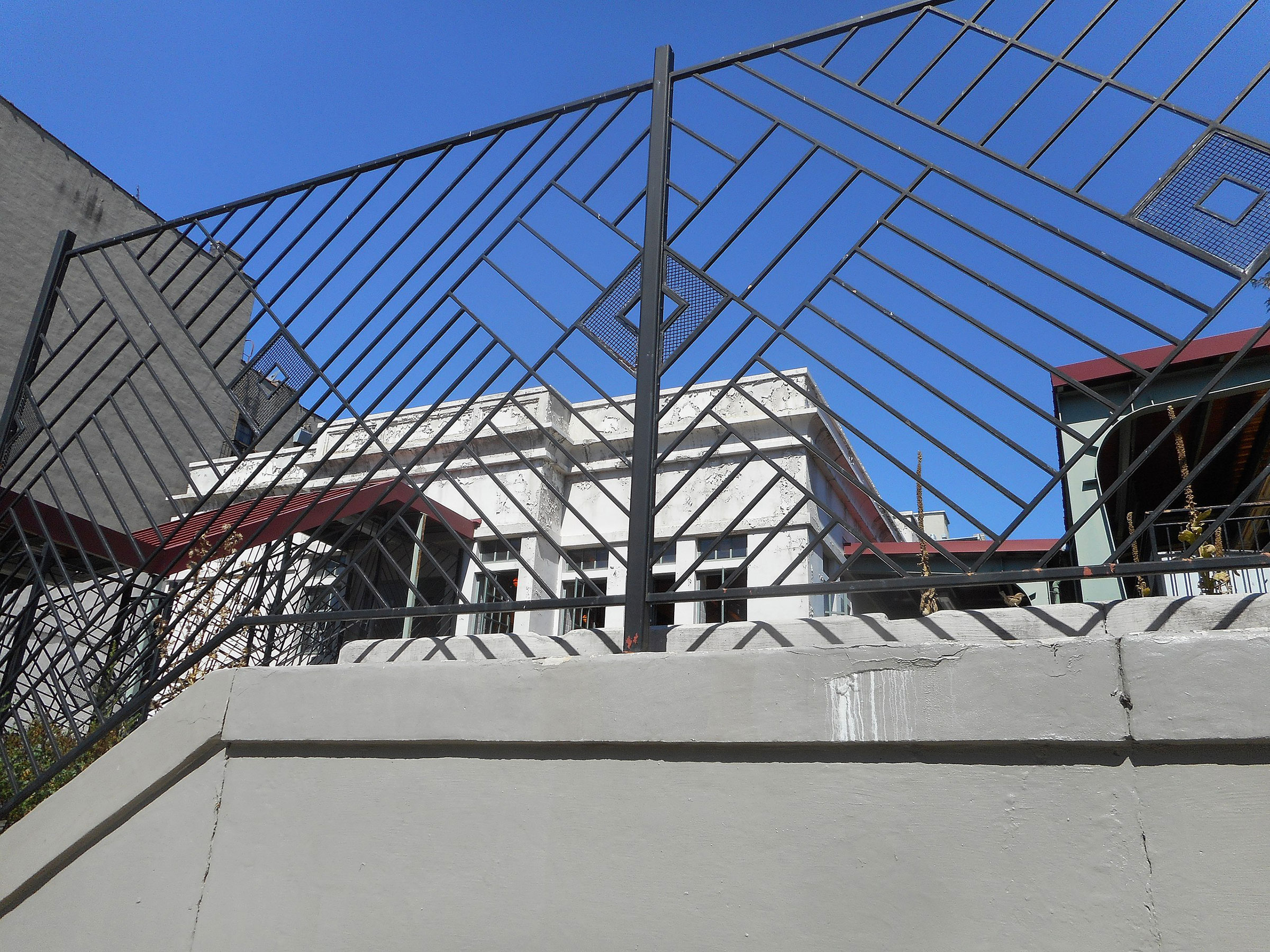
The railings of the Park Place shuttle station are transformed into art through “Units of the Free” (1999) by Isha Shabaka, BFA ’84. The piece was envisioned to make the station a part of its community, with the design including abstract shapes and a metalwork African mask.

“Untitled” (2017) by Mickalene Thomas, BFA Fine Arts ’00, is a mosaic artwork that brings her distinctive collage approach to the platform walls of the 53rd Street (R) station. It includes visuals derived from textile patterns and the flora of New York.
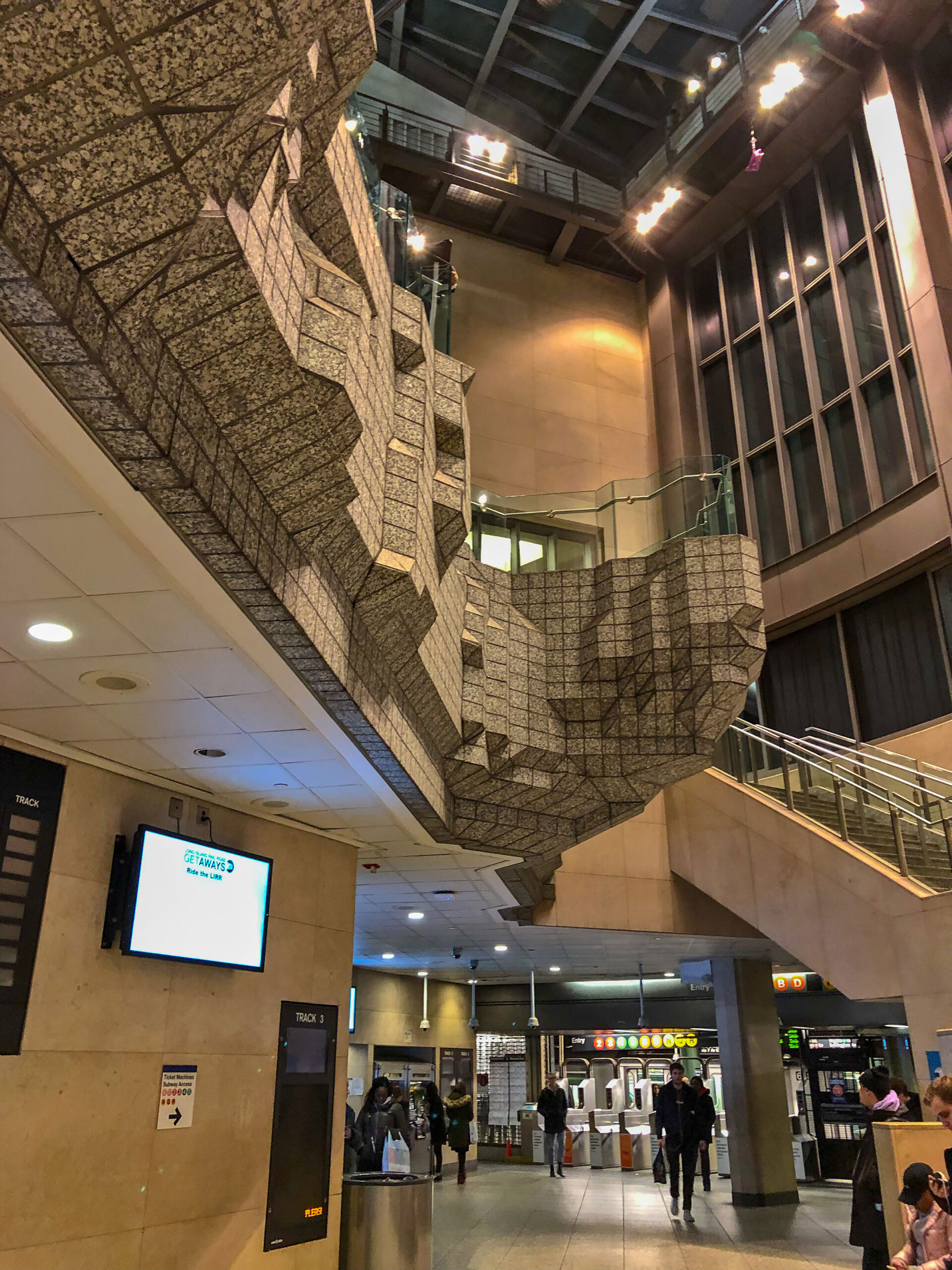
In the atrium entrance of the Atlantic Terminal station that serves the subway and the LIRR, Allan Wexler, MArch ’76, and Ellen Wexler created a craggy balcony and wall from granite. Allan stated that “Overlook” (2009) is intended to provide “the experience of viewing an urban public space as if it were a nature setting.”
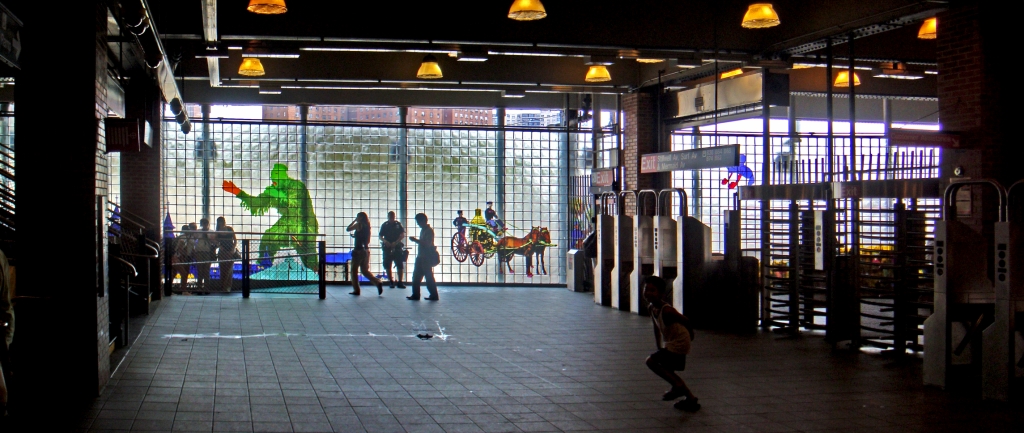
At the end of the line in Coney Island, beachgoers and commuters exit into a station animated with large-scale depictions of hot dogs, amusement park rides, and oddities like the never-built Globe Tower. “My Coney Island Baby” (2004) by Robert Wilson, BFA Interior Design ’66, was silk-screened onto glass bricks and illuminates with the shifting sunlight.
Queens
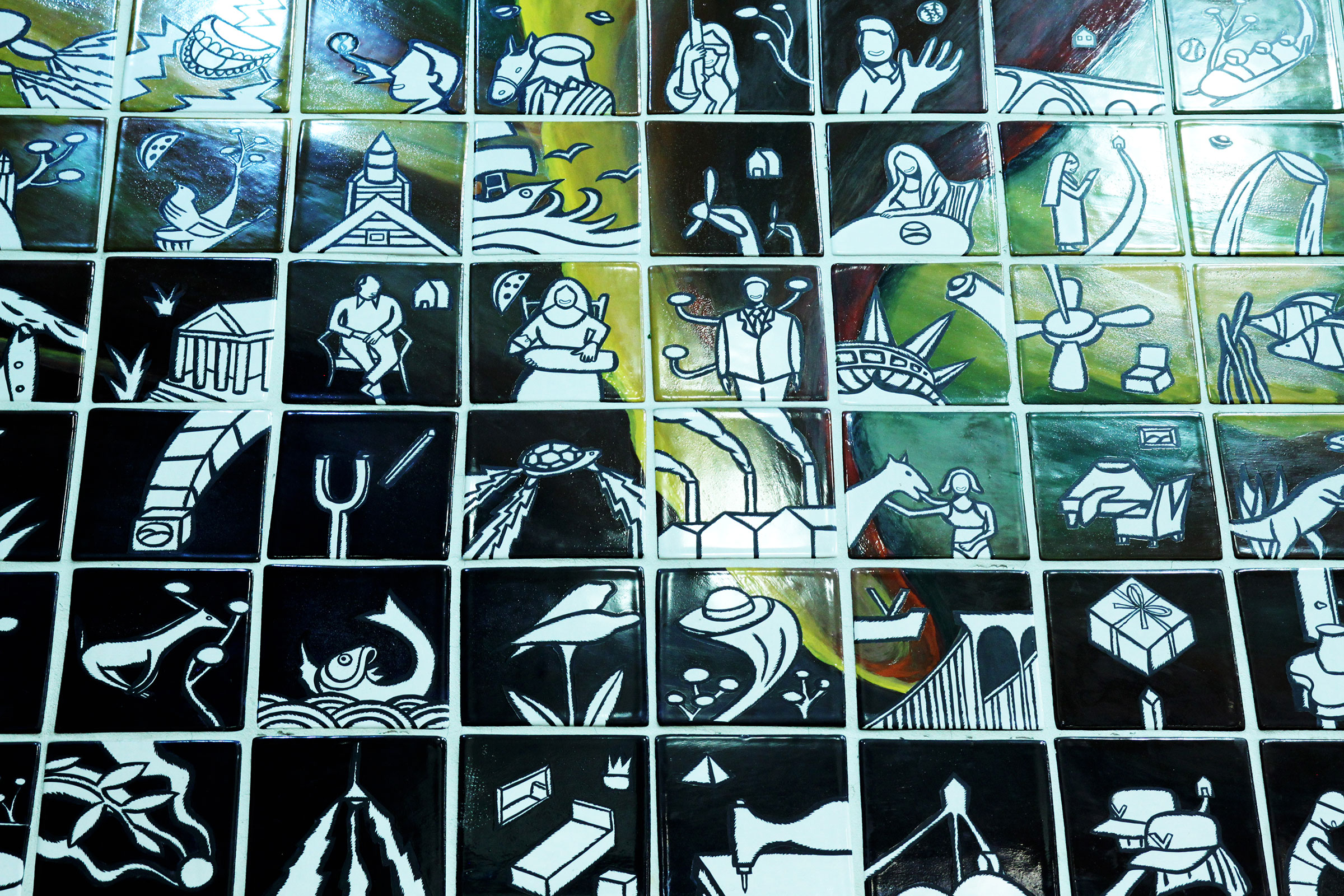
“Happy World” (1999) by Ik-Joong Kang, MFA ’87, in the Flushing-Main Street (7) station includes over 2,000 ceramic tiles, each with its own tiny scene. They include events in the diverse community of Flushing, Queens, views of the city, people at home and work, and children playing.
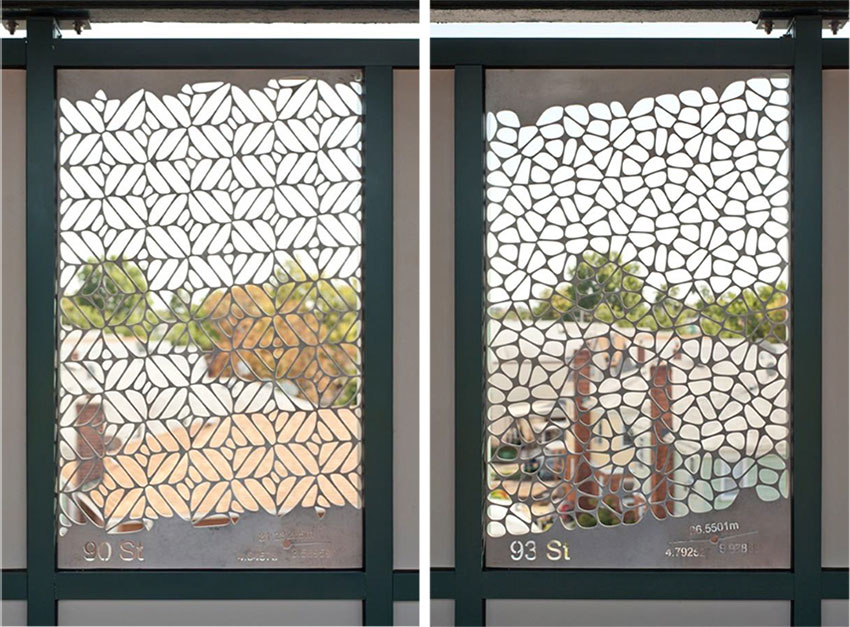
The global coordinates of the 88th Street subway station on the A line in Queens inspired “MORPHING88” (2015) by Professor of Undergraduate Architecture Haresh Lalvani, MS Architecture ’72. Each of the 24 laser-cut stainless steel panels on the platform has a pattern determined by the distance between the streets and their angle to the equator.
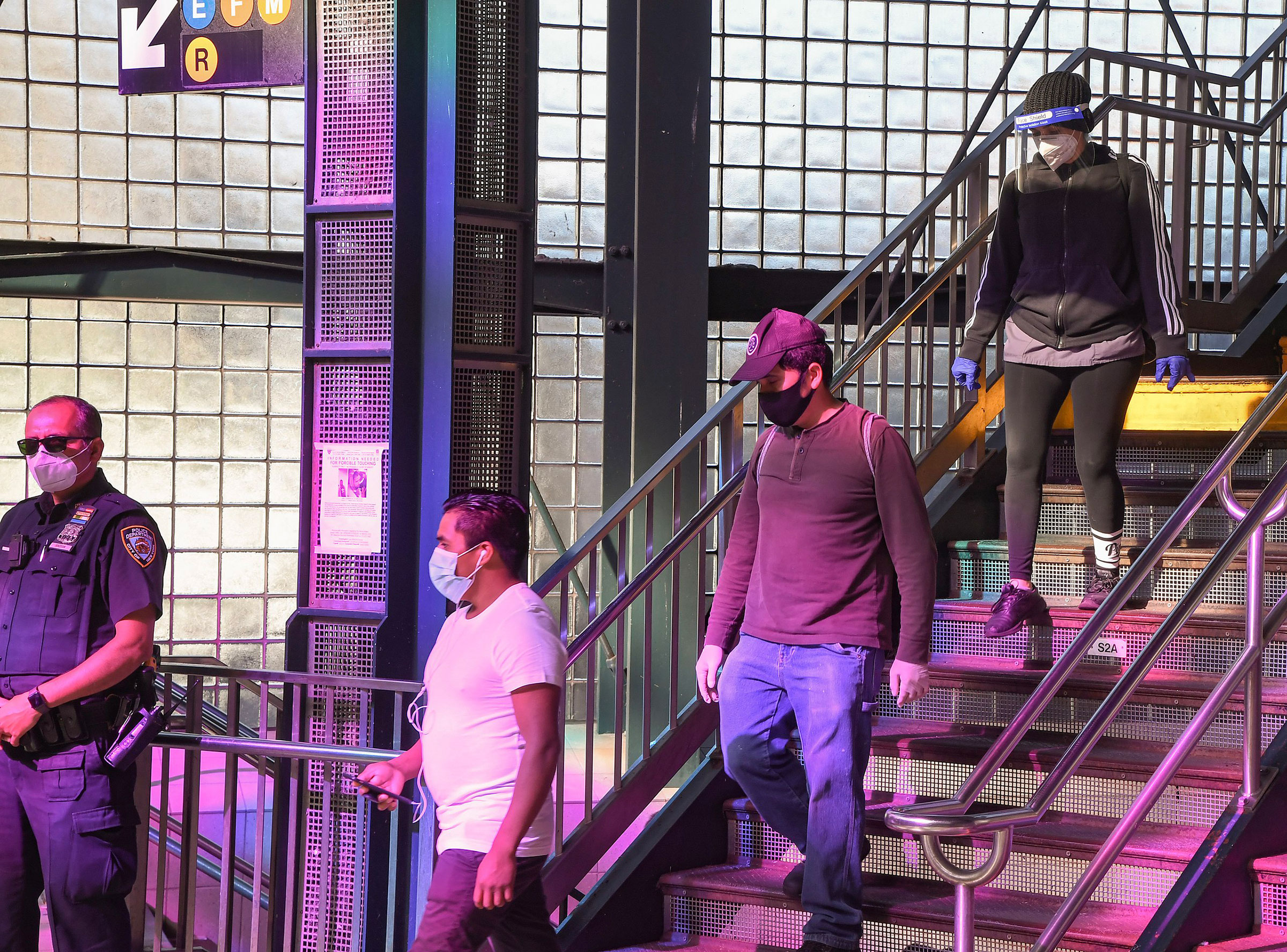
Tom Patti, BID ’67; MID ’69, worked with station architects FX + FOWLE on “Passage” (2004), which illuminates the interior with colors inspired by the markets and flowers of Queens. The window piece in the Jackson Heights-Roosevelt Avenue (E/F/M/R) and 74 Street–Broadway (7) station changes throughout the day and with the weather, making each visit to its ethereal light different.
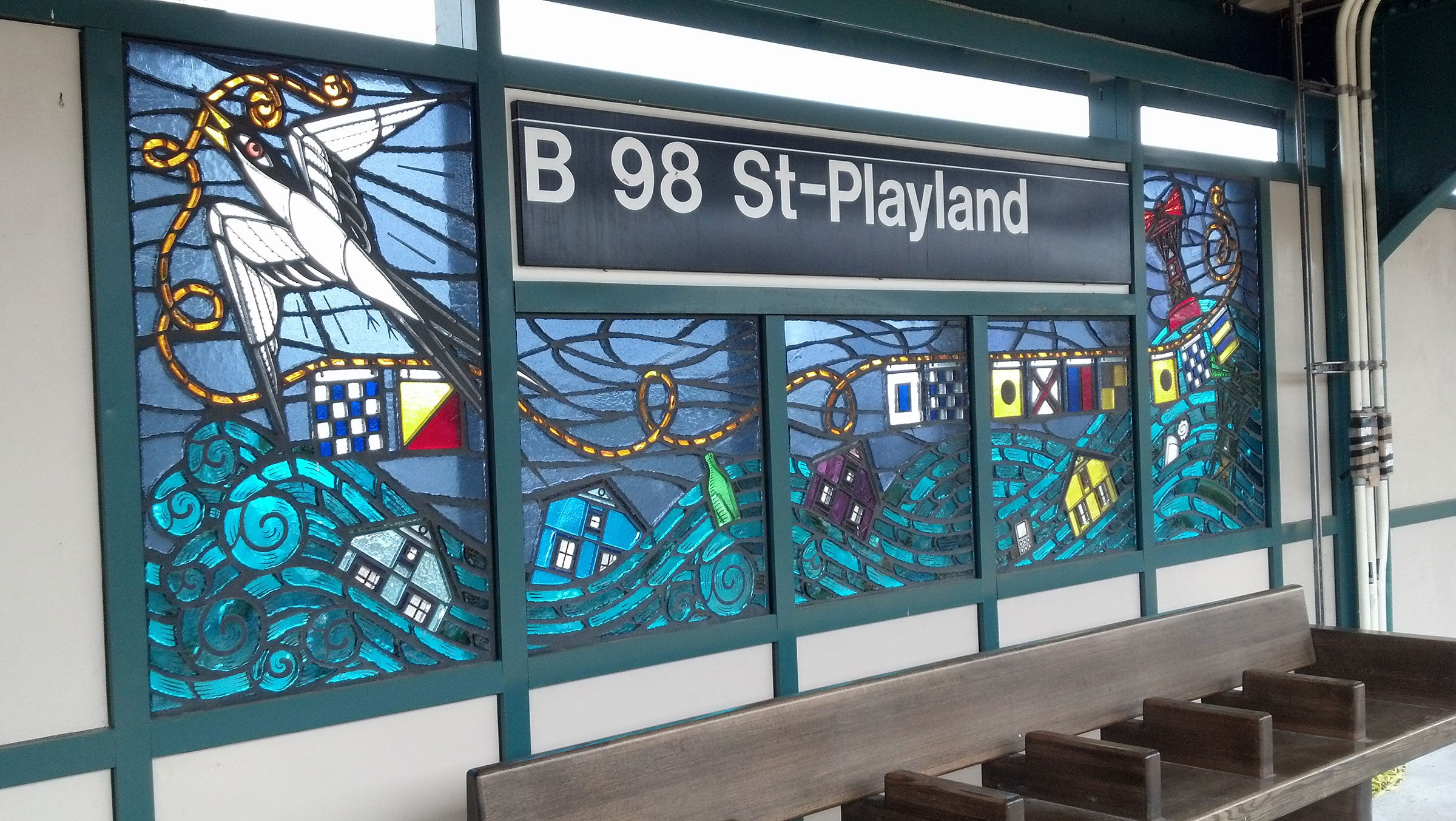
The maritime heritage of Broad Channel is recognized in the buoyant “Be Good or Be Gone” (2011) by Duke Riley, MFA Sculpture ’06, at the Beach 98th Street (A/S) station. The faceted glass panels on the platforms include detailed scenes with local birds like the piping plover, barges, tugboats, and homes on stilts.
The Bronx
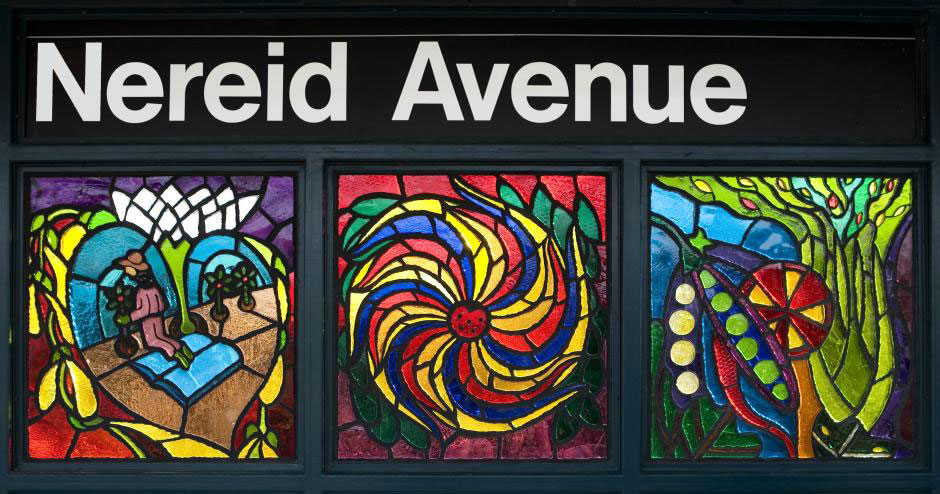
“Leaf of Life” (2006) by Noël Copeland, BFA Fine Arts ’82; MFA Fine Arts ’84, includes imagery inspired by the plants and animals in the Bronx Botanical Garden, Bronx Zoo, and Bissel Gardens community garden. The faceted glass panels on the platforms of the Nereid Avenue (2/5) station are radiant with flowers, birds, butterflies, and more.
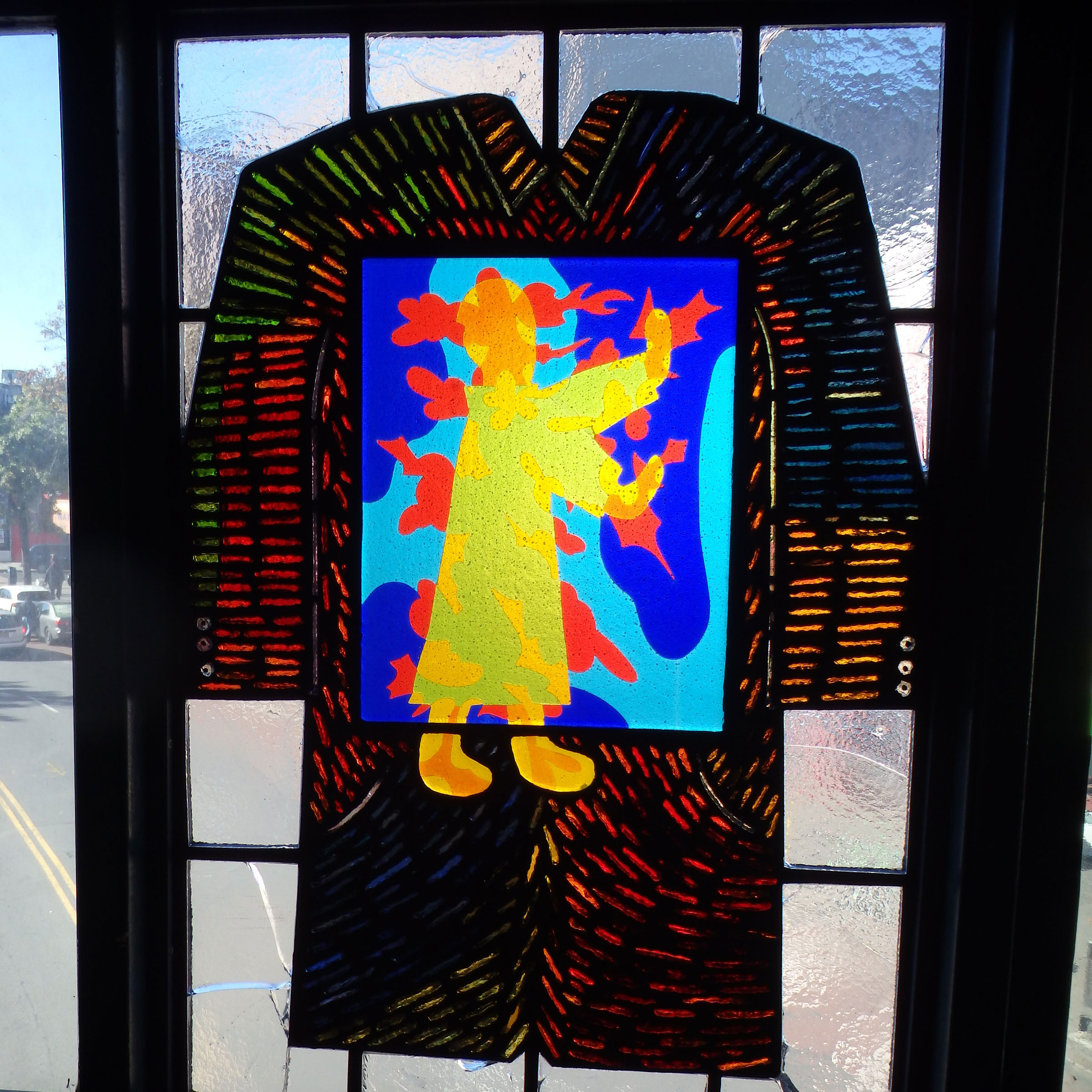
Shirts, hats, umbrellas, and gloves adorned with bright figures represent the wares of the shops on Fordham Road in “Patriasana, Wholesomeland” (2005) by Moses Ros, BArch ’83. The faceted and laminated glass windows were based on paintings and works on carved wood inspired by Caribbean music and dance.
Long Island Rail Road (LIRR)
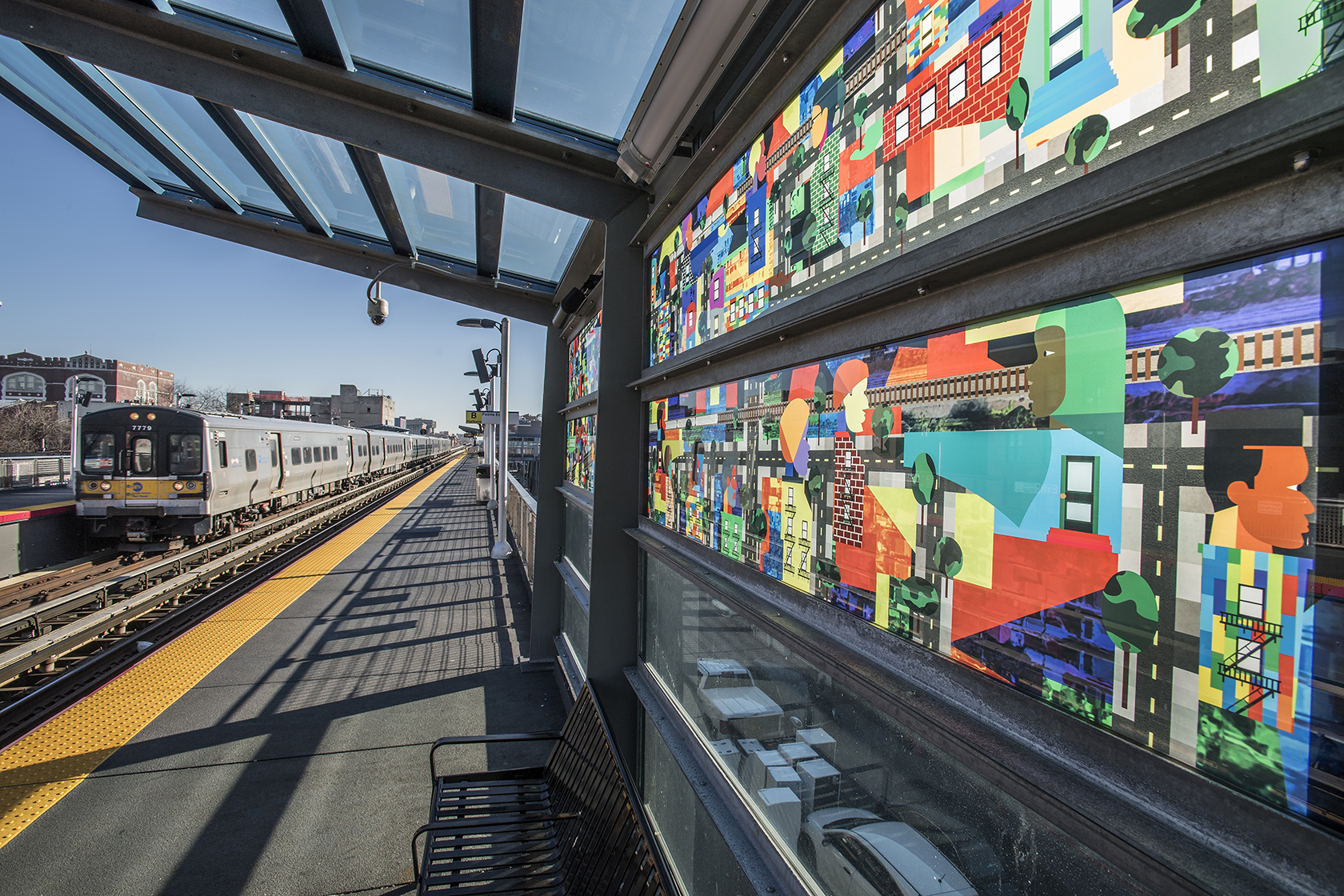
At the LIRR Nostrand Avenue Station in Brooklyn, “Around the Way” (2019) includes 85 laminated glass artwork panels by Derrick Adams, BFA Art and Design Education ’96, spanning the platforms and pedestrian bridges. Using a collage-style approach, Adams remixed imagery from maps, aerial photographs, and personal history to celebrate the diversity of the surrounding neighborhoods of Crown Heights and Bedford-Stuyvesant.
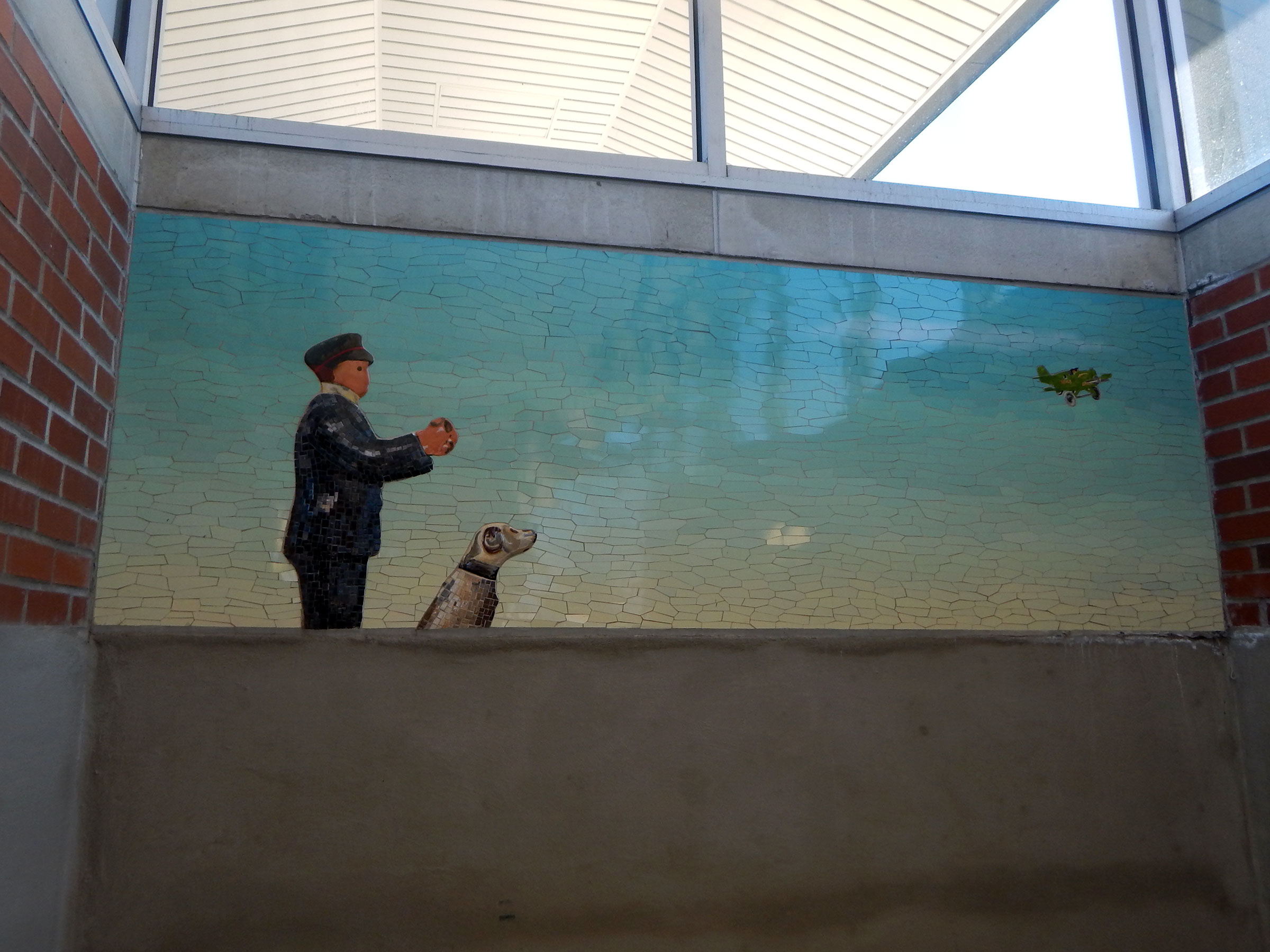
Inspired by his father’s passion for model trains, Peter Drake, BFA Painting ’79, created a series of paintings that were turned into hand-painted glass windows and mosaics at the Massapequa LIRR station. “Waiting for Toydot” (2015) playfully celebrates the adventure of train travel.
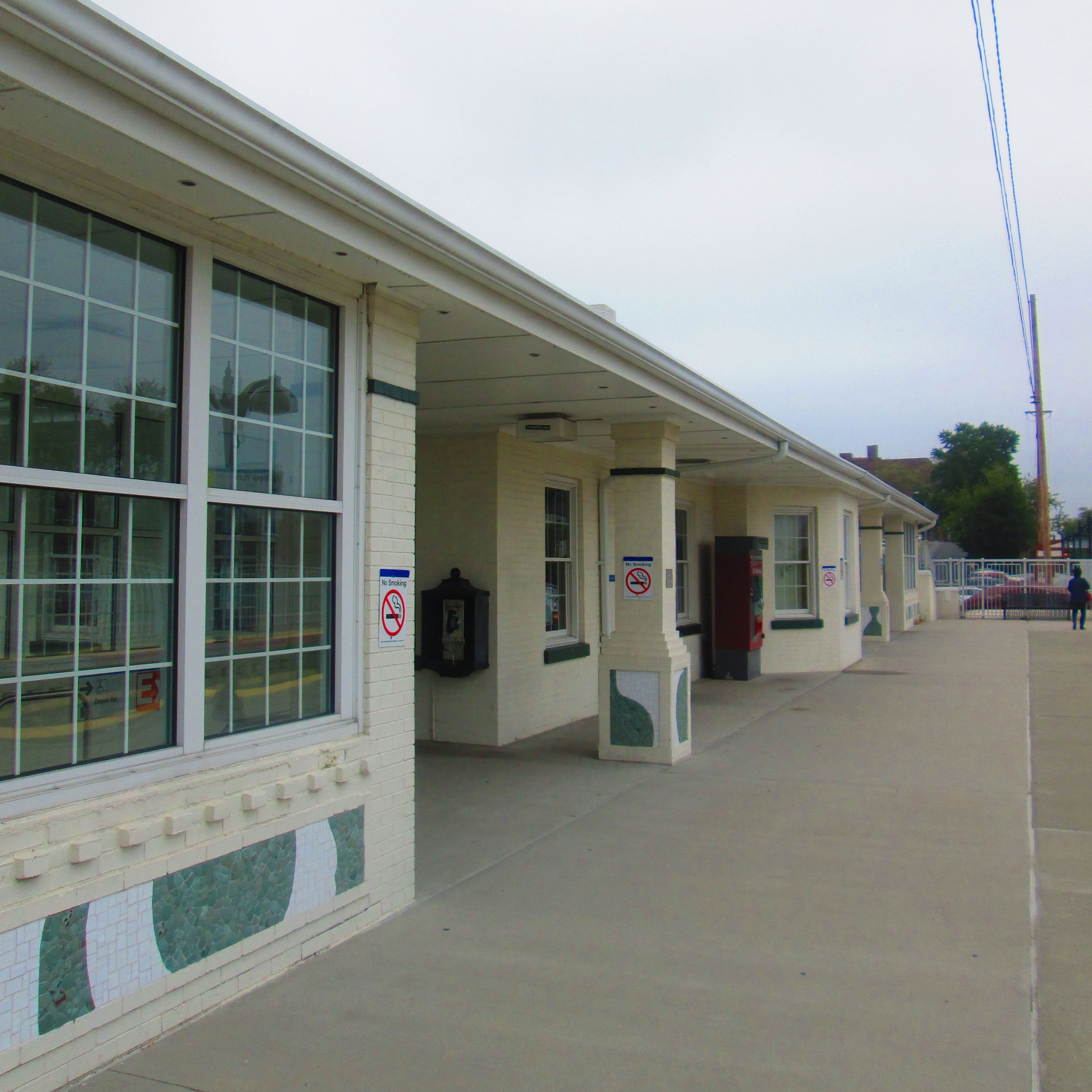
Adjunct Professor CCE of Fine Arts Jean Shin, BFA ’94; MS ’96, used fragments from pottery making in Icheon, South Korea, for the large-scale mosaic murals on the LIRR’s Broadway Station in Flushing, Queens. “Celadon Remnants” (2008) is on the south stair walls as well as in architectural niches around the station, reimagining the cast-off material as touches of unexpected beauty.
Metro-North Railroad (MNR)
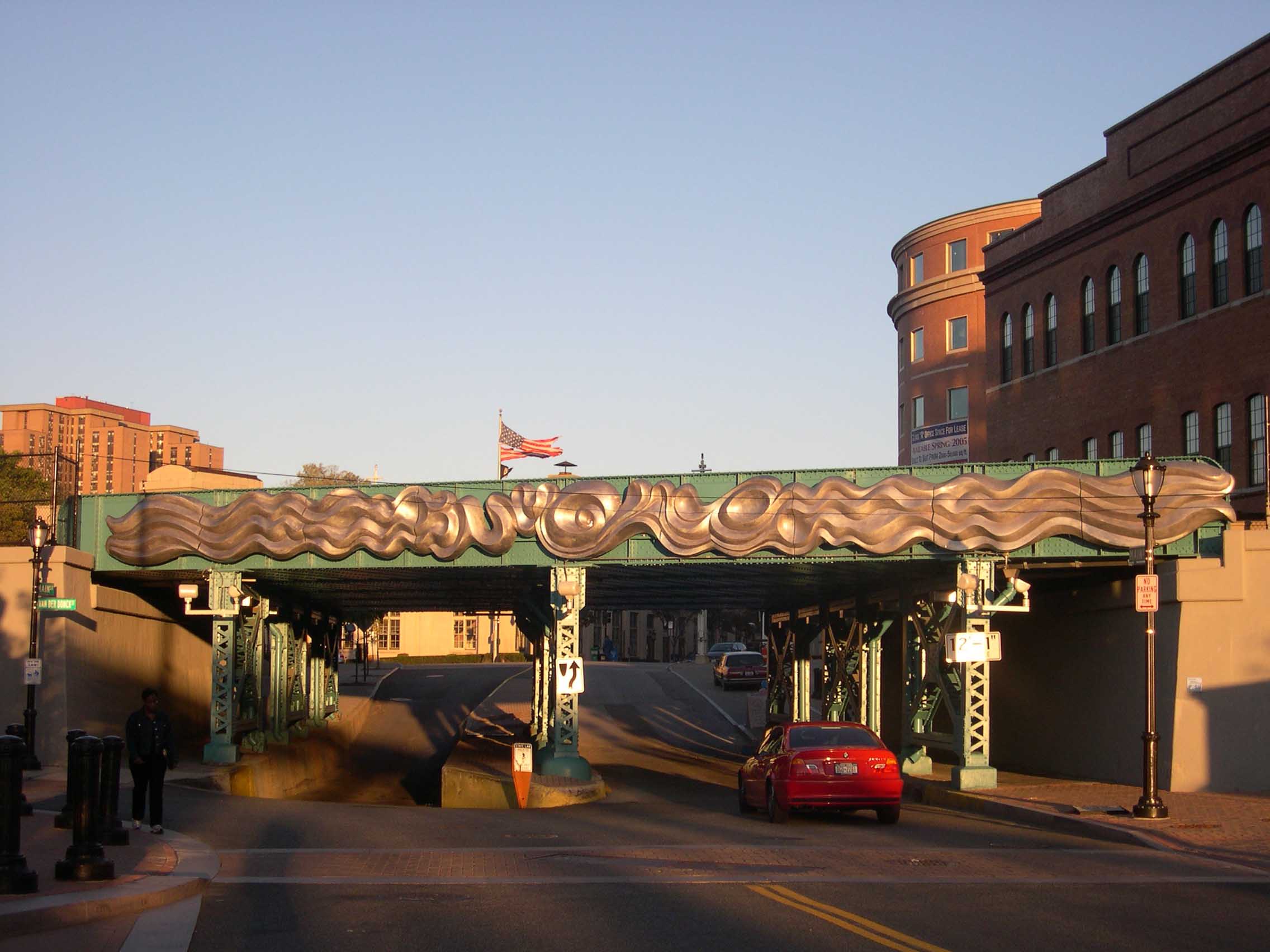
The Lenape word for the Hudson River—Muhheakantuck—references that it’s a river that flows in two directions, up and downstream, a constant movement echoed by the colossal metal artworks on the Yonkers station by Barbara Segal, MFA Sculpture ’96. “Muhheakantuck (The River that Flows Two Ways)” (2005) is made from cast aluminum and can be seen by commuters in the station and on the nearby streets.
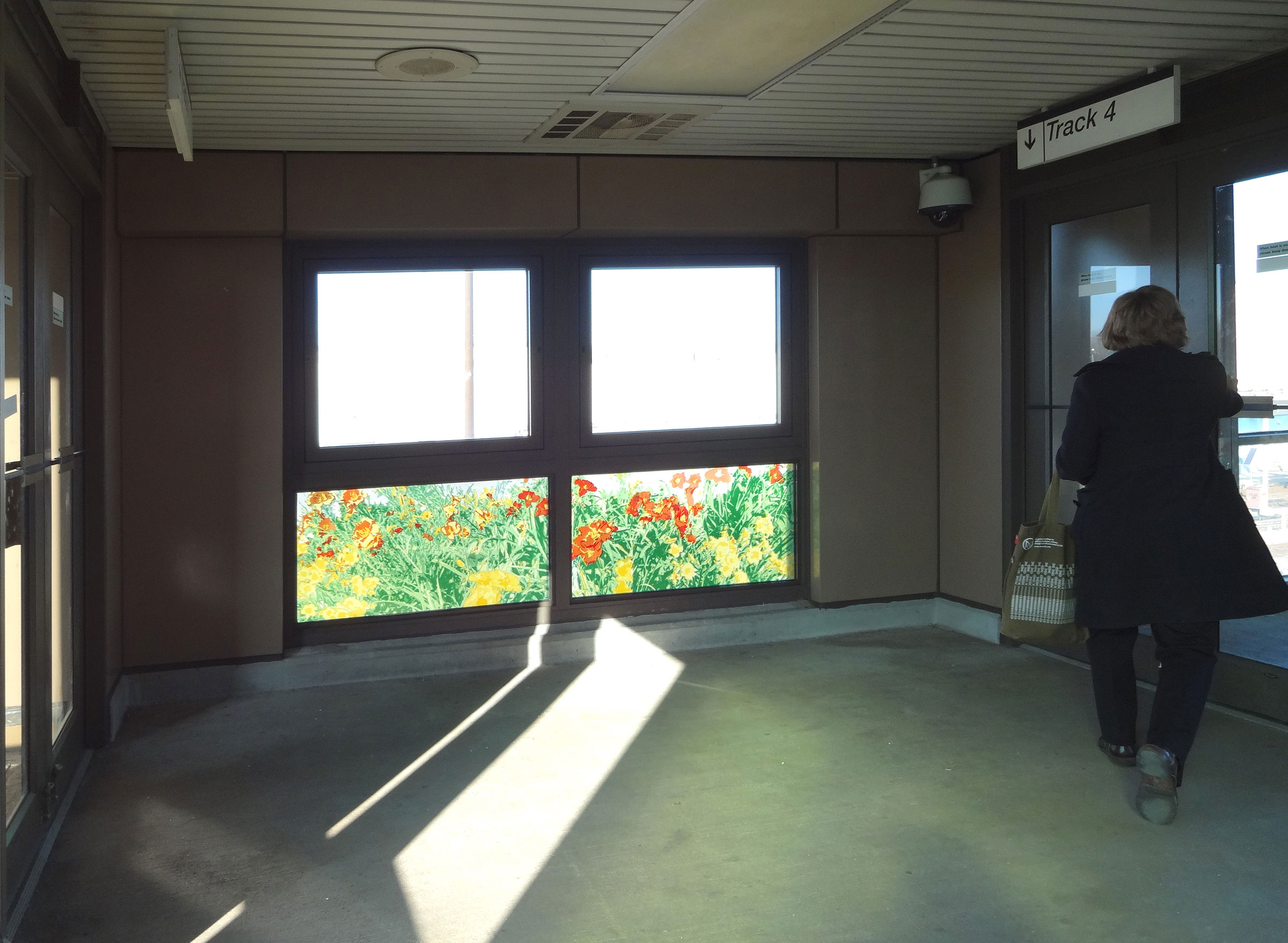
“Croton-Harmon Station” (2016/13) by Corinne Ulmann, adjunct associate professor in Foundation, meditates on the seasons through laminated glass, glass mosaics, and vinyl installations. The depictions of local landscapes blend into the surrounding views and quietly mark the transition of time in the MNR Croton-Harmon Station.
